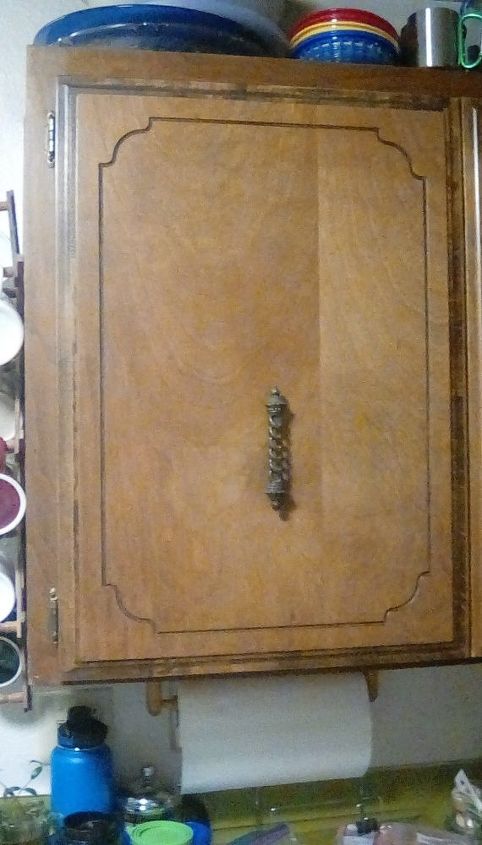Woodfill on old kitchen cabinet door how?
Related Discussions
How to get rid of mice?
We seem to have some unwelcome Mickeys and Minnies in our house. What is the best way to get rid of them?
How to remove popcorn ceiling with asbestos?
I want to remove my popcorn ceiling, but it has asbestos in it. How do I go about this safely?
How to caulk baseboard gaps?
How do I fill gaps at baseboard, should I caulk? If so, does anyone know how to caulk baseboards?
How to fix squeaky hardwood floors?
How do I fix squeaky hardwood floors?
How do you repair a sprung kitchen cabinet door that will not close?
How can I repurpose old glass cabinet doors?
So there are three glass cabinet doors with lead design, or whatever you would call it, taken from the old kitchen of my dads place. They're in good condition still a... See more






You will probably need to sand down the current finish... then use a paintable or stainable wood filler (depending on whether you intend to paint or stain) let the filler dry well, sand, and prime/paint or stain and clear seal.
Ye, you can use wood fuller on any holes such as handle screw holes. Just apply a small amount into the holes, smooth over with your finger and let dry. If after it drys you still feel or see an indentation, add more. When you have it fairly level lightly sand and you're ready to paint or stain. The holes won't be noticeable any more.
I use Plastic Wood, it is paint-able and stain-able.
When I painted my old cedar chest the new hardware I got was a different size then the old hardware. Filled the holes, let it dry, sanded until smooth and painted. You can't tell where the holes were. Looks very good.
Yup any type of wood filler would work fine after you remove the hands. Smooth it over/fill the holes with your finger then, after it dries, sand it smooth and then prime and then paint.
Before you paint make sure you remove all old paints, varnishes, or sealers, you need clean wood! Using a wood patch product or filler to fill hardware holes is a good idea, make sure you sand that area smooth also. Then paint away!
Put wood filler in the holes and sand until smooth. Clean cabinets of all grease and gloss and then prime with a good primer and then put on the final coat. Primer can be tinted to match your finish coat making the finish much nicer.
Wood filler for the holes and decorative groove if you want to cover them.
Make sure they are clean and dry. Remove the doors and hardware. Mark the doors and cabinets with tape where they go. Lightly sand the doors and cabinets to remove any gloss and roughen the surface for paint with 120- to 220-grit sandpaper. Use a tack cloth or damp rag to remove dust after sanding. Prime with a stain blocking primer like Zinsser 123, KILZ,or BIN and have it tinted to the color of the top coat. This will prevent dark or stained surfaces from showing through the top coat. Acrylic, or water-base, paints are low-fume and clean up easily with water. Alkyd, or oil-base, paints require good ventilation because the paint contains solvents that can irritate your lungs and make you feel sick. Alkyd options require mineral spirits for cleanup, but they provide a hard, durable paint finish. Whichever you use, buy the best-quality paint you can afford for a lasting kitchen cabinet finish. Seal with at least three coats with a water based polyurethane. Use a small foam roller and foam brush for a smooth finish.